When we think of rhinoceroses, we immediately picture the African savannah. In our minds, wild rhinos are animals that only exist in the African plains. However, this is not the case. Rhinos also thrive in Asia.
It is believed that there are five species of rhinoceroses in the world: the black rhino, white rhino, Sumatran rhino, Javan rhino, and Indian rhino.
The first two species are found in Africa and belong to the two-horned rhinoceros category. The black rhino mainly resides in central Africa, while the white rhino is primarily found in southern Africa. However, a significant number of hybrids of these two species exist between their ranges. Currently, there are about 5,000 black rhinos worldwide, and the population of white rhinos exceeds 20,000. The image below depicts a black rhino.
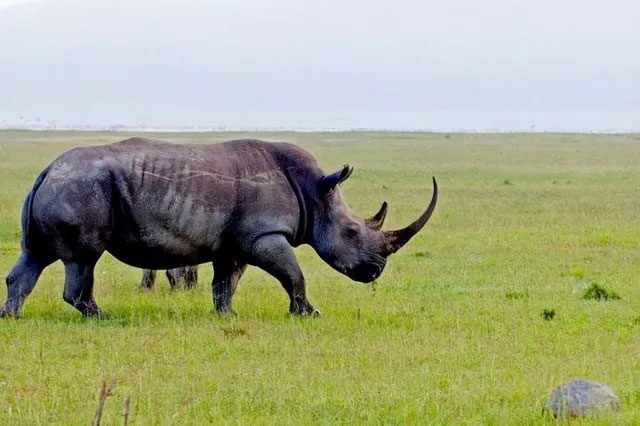
Black Rhino.
The black rhino is a large mammal belonging to the order Perissodactyla, inhabiting eastern and central Africa, including Kenya, Tanzania, Cameroon, South Africa, Namibia, and Zimbabwe.
The largest species among the five mentioned is the white rhino, weighing up to 3.5 tons, similar to a hippopotamus, and second only to elephants among terrestrial animals. The image below shows a white rhino.
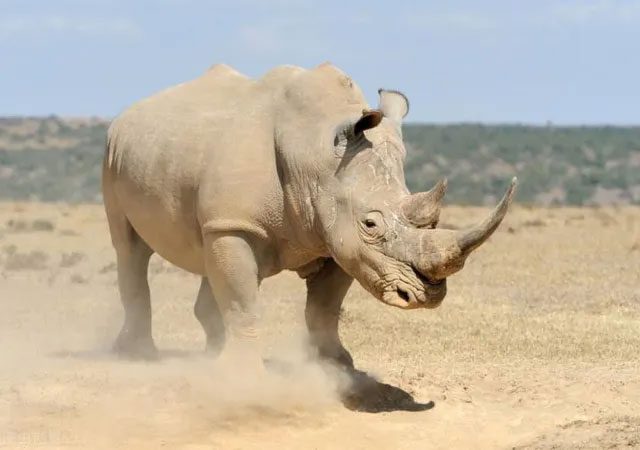
White Rhino.
The white rhino, also known as the square-lipped rhino, is one of the five remaining species of rhinos and is among the few large herbivores still in existence. They are native to northeastern and southern Africa. Rhinos tend to live in groups ranging from two to seven individuals, despite their large size.
The Sumatran rhino, Javan rhino, and Indian rhino are the last three species that only inhabit Asia.
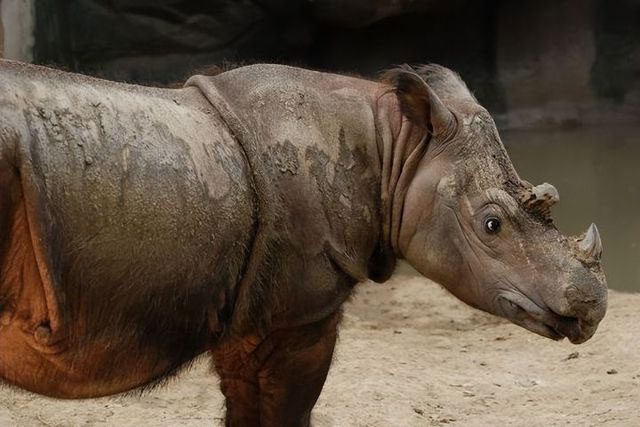
The Sumatran rhino, also known as the two-horned rhino, is the smallest and one of the hairiest rhino species still in existence. Like the African species, they have two horns. They were once widespread in Southeast Asia, but today only about 80 individuals remain.
The Javan rhino is primarily found on the island of Java in Indonesia and the Indochinese Peninsula, but today this species only exists in Ujung Kulon National Park in Indonesia, with a population not exceeding 80 (globally).

The Javan rhino, also known as the Sunda rhino, is one of the five surviving species of the Rhinocerotidae family.
The Indian rhino is primarily distributed in areas such as India and Nepal, with approximately 3,200 individuals remaining worldwide.

The Indian rhino, or greater one-horned rhino, is a species native to the Indian subcontinent. They are classified as vulnerable and are listed in the IUCN Red List due to fragmented populations and a range of less than 20,000 square kilometers.
This indicates that there are actually more species of rhinos in Asia than in Africa. Among the three Asian rhino species, the Sumatran rhino is the two-horned rhino, while both the Javan and Indian rhinos are one-horned.
As previously mentioned, wild rhinos once existed in China over 100 years ago, typically residing in the southwestern regions of the country. In even earlier times, they were found in the North China Plain and northwestern China.
The earliest rhino fossils excavated in China suggest that rhinos may have existed in the country for as long as 20 million years, with a very wide distribution. Throughout the history of ancient Chinese civilization, rhinos have never been absent from ancient texts and writings. Some documents indicate that at least during the Warring States period, rhino hide was used for armor, and before that, rhino horns were used to make drinking cups and medicinal ingredients (modern science has proven that rhino horns are similar to human nails and have no medical value).
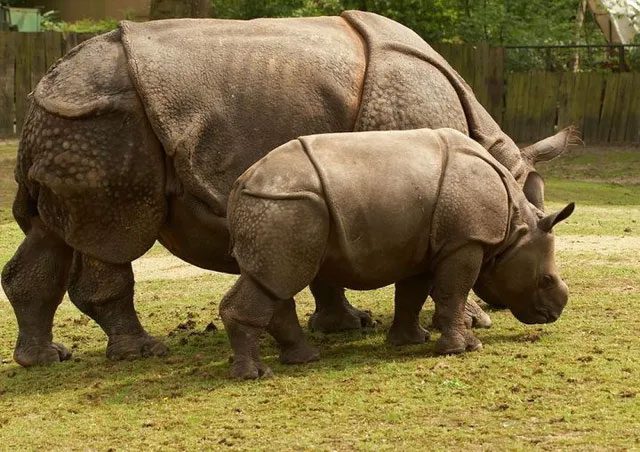
Fossils indicate that rhinos existed in China up to 20 million years ago.
An ancient record also confirmed that during the Shang Dynasty and earlier, the northernmost boundary of rhinos in China could be around Inner Mongolia and Wuhai. During the Zhou Dynasty, this boundary retreated south to Qinghai and southeastern Gansu, southern Shaanxi, the Han River basin, and the Huai River basin down to the lower reaches of the Yangtze River.
After the Han Dynasty, the distribution of rhinos in China rapidly moved south. By the Tang Dynasty, they were mainly found from Xinjiang, Qinghai to Zhangzhou, Fujian. After the Tang Dynasty, rhinos only remained south of the Yangtze River, and by the Song Dynasty, they were found in Guangdong, Guangxi, Yunnan, and Tibet. By the Ming and Qing Dynasties, rhinos were only present in Yunnan and Guangxi. Currently, they have completely gone extinct in this country.
The Indian rhino in China went extinct in 1920, just 102 years ago; the Sumatran rhino went extinct in 1916, 106 years ago; the Indian-Chinese subspecies of the Javan rhino went extinct in 1855, 167 years ago, and the subspecies of the Javan rhino in India went extinct in 1922, which was 100 years ago.
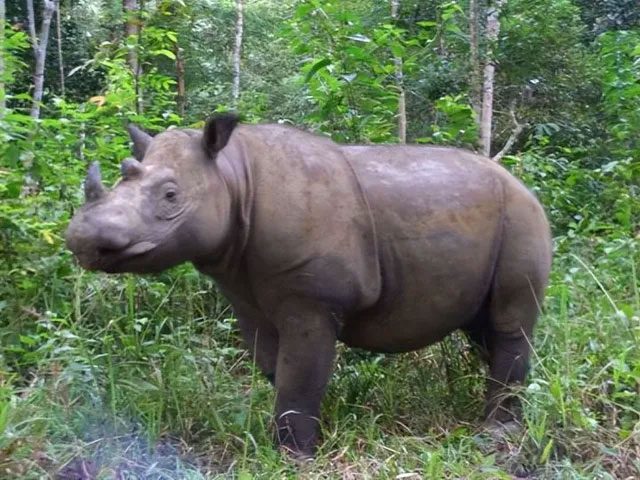
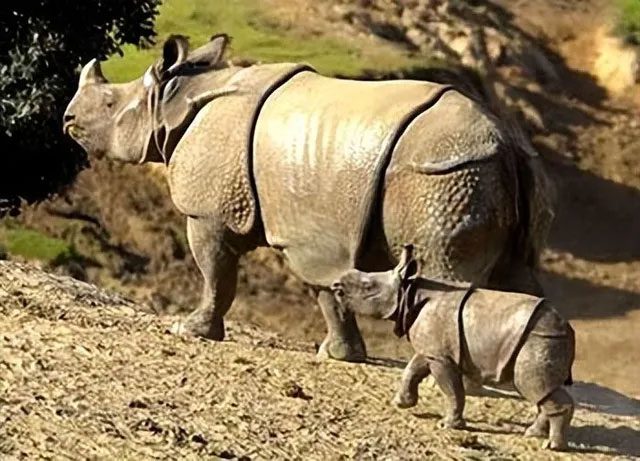
The main reason for rhino extinction is human hunting.
So why did these three rhino species in China gradually go extinct? The first reason is climate change throughout Earth’s history. A gradually cooling climate is a significant factor, as rhinos, which have little fur, are poorly adapted to cold temperatures. Moreover, a colder climate means less food for rhinos. Consequently, the habitat of rhinos in China moved southward to better suit living conditions.
However, the most important reason, and the direct cause of rhino extinction in this country, is human hunting. As mentioned earlier, rhino skin could be used for armor, rhino horns for drinking cups, medicinal ingredients, and of course, other parts of the rhino were also utilized, making them very appealing to some people.


















































